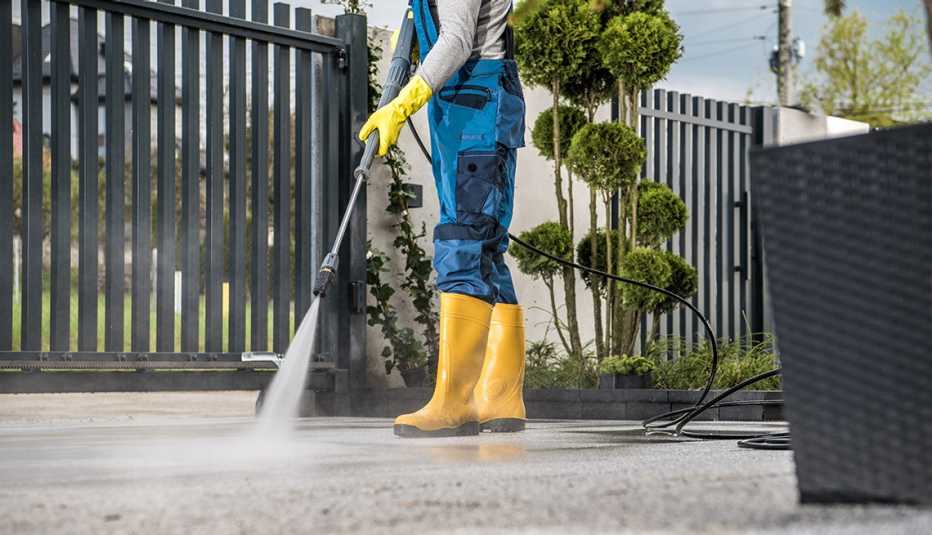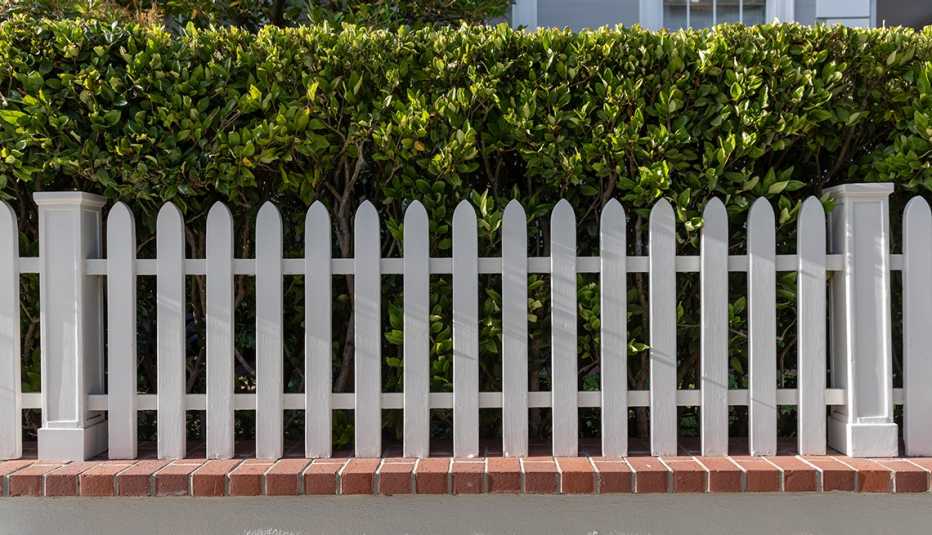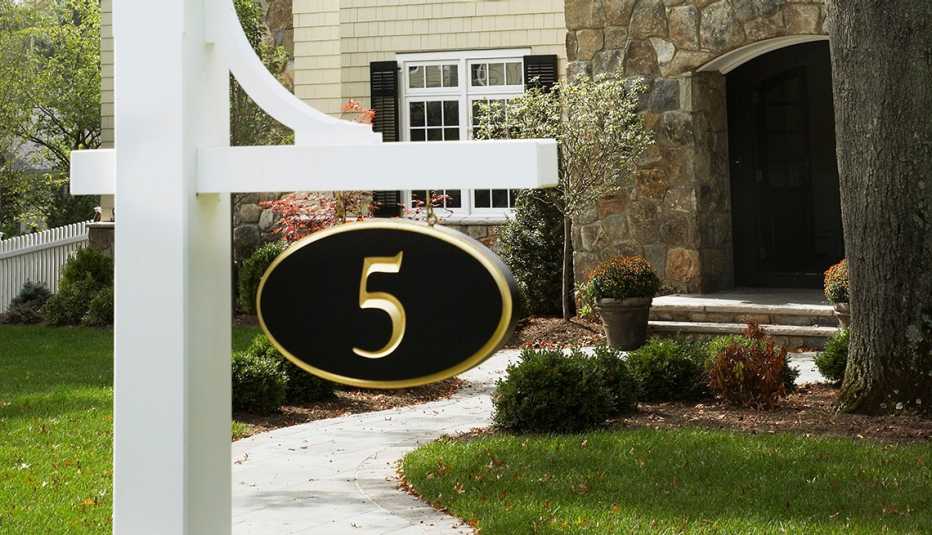AARP Hearing Center


That thing that makes you stop and stare at a home in your neighborhood while on a stroll? It’s curb appeal. When a house has it, there’s no fighting its allure.
Some curb appeal upgrades may cost very little; others could require a considerable financial outlay. Either way, you can expect to receive a return on your investment: Strong curb appeal can boost a home’s sale price by 7 percent. For older adults who may be considering selling their house to cover retirement expenses, that isn’t peanuts.
There’s also the safety factor. Now is your chance to tackle front-entrance projects that will accommodate you at every age and stage. Adding ramps or widening walkways to boost mobility, or upgrading lighting to increase security, can transform your current residence into a comfortable and safe forever home.
Ready to turn your humble abode into a neighborhood knockout? Here’s how.
START SMALL


1. Do a visual once-over
Step back and eye your home like a potential homebuyer or first-time passerby. Notice anything askew that you’ve been overlooking? Perhaps the storm door is hanging a little ajar, or maybe the shutters aren’t even. Spend an afternoon making small, easy repairs to keep the front of your home in tip-top visual shape.
2. Tidy up
“Keeping things neat and tidy is a very easy way to make sure your home makes a great first impression,” says Bailey Carson, chief operating officer at Angi (formerly Angie’s List). Is a ladder still leaning on the side of the house from a months-ago project? The easiest way to add curb appeal is to simply put items away. If there’s no room in the shed or garage, it’s time to declutter and organize.
3. Get rid of the grime
Cobwebs, dirt, dead leaves — or, worse, mold and mildew — can build up on walls and around windows, doors, gutters and eaves, so clean your home’s exterior at least semiannually. There are a lot of expensive chemicals and cleaners that tout special properties, but soap and water in a bucket with a sponge goes a long way.
4. Power-wash the exterior
Hire out, rent or buy a pressure washer to clean brick, sidewalks and the exterior of your home. “I’m a big fan of the pressure washer, which you can buy or rent at most home improvement stores,” Carson says. “If you spend a Saturday putting in just a little bit of sweat equity with one, it can make a big difference on your driveway and walkways.” If you don’t want to handle the task yourself, look for coupons from area companies.
5. Clean windows and door glass
Let your home shine by scrubbing away dust and fingerprints on your front windowpanes. “Having newly cleaned, glistening windows makes a world of difference for curb appeal,” says Jennifer Davis, a broker with Maison Real Estate in Charleston, South Carolina. “When your windows are clean, light streams through and brightens all the rooms in the house.”
6. Limit the outdoor decor
Don’t overdo the yard decor, even if it means limiting your garden gnome collection to just two or three favorites, or moving a quirky setup to the backyard. Too much can make the area look cluttered.


FOCUS ON THE FRONT
7. Paint or stain your front door
Make your front door pop with a coat of fresh paint. Zillow research suggests that homes with black doors sell for around $6,500 more than similar homes with front doors in other colors. If you’re not selling and want to make a unique statement, opt for cheery teal, red or yellow. Steer clear of pink or orange, which are the least appealing front door colors according to an Opendoor.com survey. If natural wood doors are more your style, liven yours up with a new coat of golden oak or rich mahogany stain. If your door isn’t wood but you like that look, search “wood grain paint kit” online.
8. Or replace your door entirely
If you’ve noticed drafts coming from your door, or if the casing around it is warped, cracked or shows other signs of weather damage, it may be time for replacement. The good news is you can choose from a range of styles and materials, including tried-and-true wood and energy-efficient insulated steel or fiberglass.
Take a nod from your home’s architecture to select a new front door that feels right for your entryway, whether traditional, Craftsman, Old World or modern. If you want to use glass in your front door design, it’s important to consider both style and security.
9. Add a wreath and a welcome mat
Accentuate your front-door makeover by adding a cheery wreath and a new welcome mat. It’s a one-two punch that can instantly take your house from cold to cordial.
When choosing a wreath, don’t feel you have to default to a traditional shape. “If your front door has two long windows, or sidelights, on the sides, rather than using a traditional round wreath, you can create two elongated wreaths that fit perfectly in those spaces,” suggests Mattie Sheppard, a strategic interior design adviser at Real Estate Bees and president and CEO of Perfectly Pictured Decluttering & Staging Experts in Jacksonville, Florida.
10. Change with the seasons
Nothing puts a damper on a porch’s charm like out-of-date holiday decor. Hanging seasonally specific door hangers or wreaths (think Valentine’s Day, Fourth of July, Halloween, Christmas) can be a fun way to infuse your front door with holiday joy, but only if you keep up with the change-outs in a timely manner.
11. Use planters for a pop of color
Add two matching pots or planters, placed at either side of your door or porch walk-up, filled with in-season annuals such as geraniums, petunias, impatiens and chrysanthemums. The burst of color will help frame and showcase your front door. If you’re looking for inspiration, aim for “thrillers, fillers and spillers” when researching. Start your planters with a tall focal plant — perhaps an ornamental grass — and fill out around it using smaller annuals and vines, suggests Leslie Feathers, a landscape designer based in Madera, California.
12. Add seating
If you have a front porch that’s large enough for gathering, embrace it. Add a cozy swing or bench, a colorful outdoor rug and a row of comfy rocking chairs or Adirondack chairs placed perfectly for conversation. In warmer climates, an outdoor fan helps keep bugs at bay and creates a cooling breeze. All this gives a house “a warm, inviting feeling that says, ‘Come on in. You’re welcome here,’” Sheppard says.
13. Liven up your light fixtures
If your home has basic, contractor-grade porch lights, consider adding some pizzazz with new light fixtures. For a modern look, try a pair of black or muted brass lanterns, or a set of painted steel fixtures that are at home in farmhouse and modern industrial designs alike.
“Even just updating the lanterns on either side of your front door can add a really nice touch — and it’s a relatively easy DIY project,” says Carson.
14. Revamp your railings
If your current front stairway or raised porch railings are rusted or rotted (depending on if they’re metal or wood), or if they wobble and are no longer securely grounded, it’s time to repair or replace them. The visual makeover will add noticeable curb appeal; plus the new, sturdier handrails and railings can help prevent accidents and falls and ease mobility as you age.




































































You Might Also Like
Property Brothers’ Tips for Older Homeowners
HGTV’s Drew and Jonathan Scott on how they set up homes for aging in place
Great Ways to Celebrate Living Alone
Blast your music loud, stay up late and live alone with joyful abandon
AARP Smart Guide to Decluttering
39 strategies on how to donate, ditch and downsize the things filling up your home